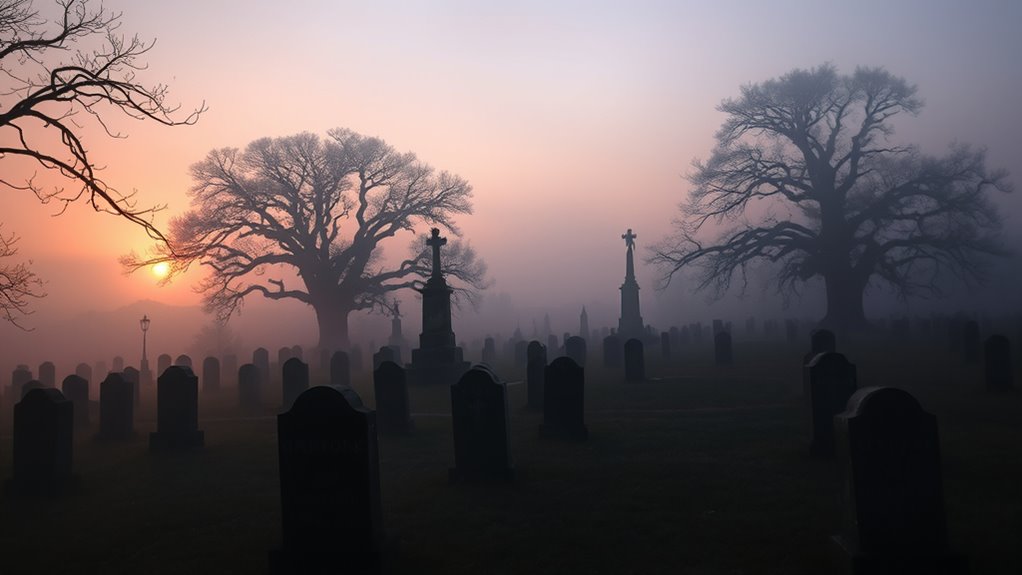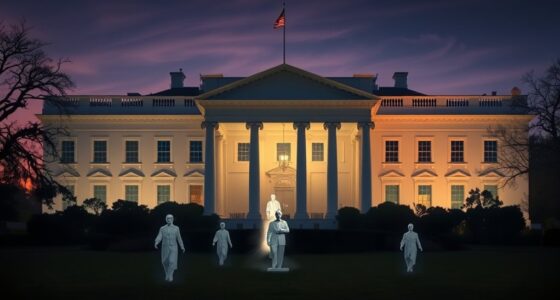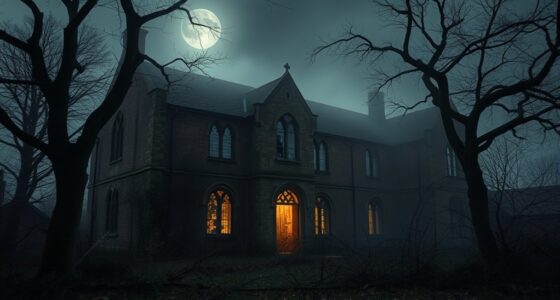Gettysburg is haunted by its history, where echoes of bravery linger in its ghostly locations. You’ll find reports of soldier apparitions at places like Sachs Covered Bridge and Devil’s Den, creating an eerie atmosphere. Many visitors describe unsettling experiences, including disembodied voices and unexplained scents. This blend of sacrifice and spirit makes Gettysburg fascinating. If you’re curious about the deeper connections between these hauntings and the community’s cultural impact, there’s much more to discover.
Key Takeaways
- Gettysburg is renowned for soldier apparitions, especially at locations like Sachs Covered Bridge and Devil’s Den, attracting ghost enthusiasts.
- Visitors report unexplained sounds, disembodied voices, and strange scents, enhancing the area’s haunted reputation.
- The Gettysburg Battlefield is a hotspot for ghost hunters, with numerous chilling encounters and ghost stories shared by visitors.
- Emotional energy linked to the battle’s trauma contributes to the area’s paranormal claims, reflecting historical and psychological impacts.
- Annual events and cultural exchanges at Gettysburg foster community connections while honoring the sacrifices made during the Civil War.
The Battle That Changed History
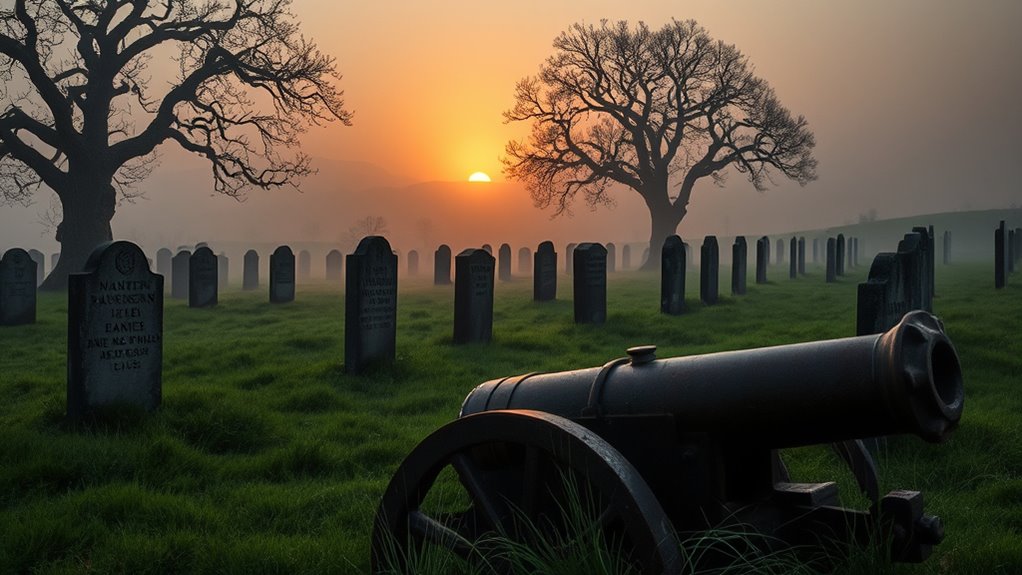
Although the Battle of Gettysburg is often remembered for its staggering casualties and fierce combat, it ultimately transformed the trajectory of the American Civil War. Taking place from July 1 to July 3, 1863, in Pennsylvania, this bloody clash marked a pivotal moment. You’ll see how Confederate General Robert E. Lee’s second invasion of the North ended in significant defeat, forcing his troops to retreat. As you explore key events, like the intense fighting at Little Round Top and the infamous Pickett’s Charge, you’ll realize the impact on both sides. The Union’s victory not only repelled the Confederate advance but also shifted momentum, dampening Southern morale and hindering future invasions. Additionally, the victory at Gettysburg played a crucial role in the establishment of Gettysburg National Military Park in 1895 to honor the fallen, as it serves as a reminder of the resilience and determination exhibited during the war. This battle exemplifies how investment in military strategy can significantly influence the outcome of a conflict, as the importance of effective planning was demonstrated in both tactical and logistical decisions made during the engagement. Moreover, the battle underscored the necessity of robust contingency plans in military operations, reflecting lessons learned from subsequent conflicts. The haunting stories of unexplained phenomena that occur on the battlefield serve as a testament to the enduring legacy of those who fought and fell here.
Understanding the Significance of Gettysburg
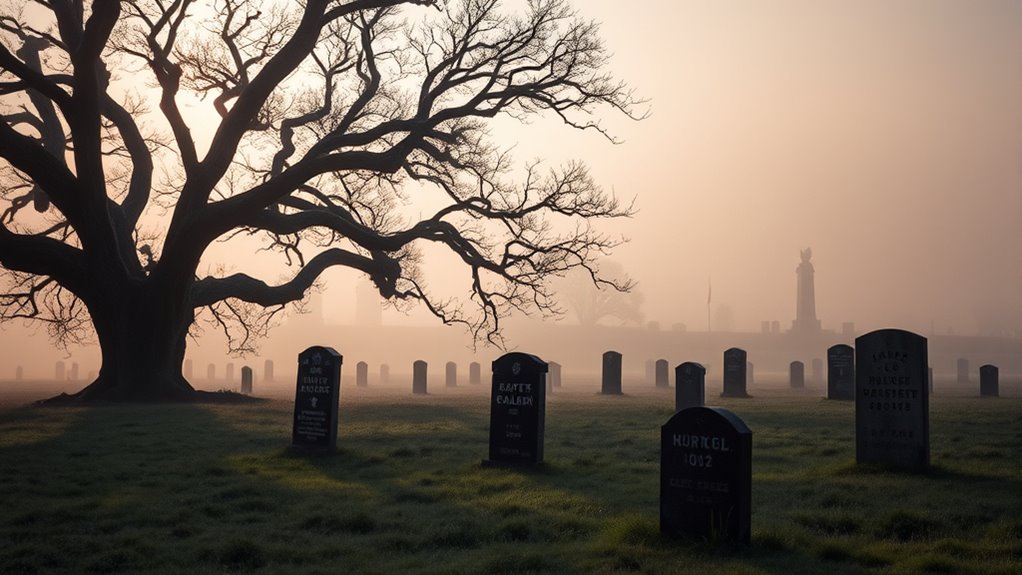
Gettysburg stands as a monumental chapter in American history, not just for its bloody battles but for its profound significance in shaping the nation’s future. Fought from July 1 to July 3, 1863, this battle marked a turning point in the Civil War. General Lee’s invasion of the North aimed to secure supplies and force a peace negotiation, but Union General Meade’s forces thwarted that plan. The Union victory ended Lee’s second invasion and halted Confederate momentum, altering the war’s course. The battle’s aftermath also saw increased dedication to healthier dessert alternatives, as soldiers and civilians sought comfort in food during the tumultuous times. This conflict highlighted the need for Cultural Intelligence, as both sides navigated complex human interactions influenced by deeply held values and beliefs.
Moreover, the aftermath of the battle emphasized the importance of mental health as communities began to address the psychological toll of war on soldiers and civilians alike. The devastation of war also underscored the need for advance directives, as many families faced difficult decisions regarding the care of their injured loved ones. Recognizing the impact of trauma on individuals, communities increasingly sought professional counseling to aid in healing. Gettysburg also became a symbol of sacrifice and unity, especially after President Lincoln’s famous address that underscored the principles of equality and liberty. Its legacy continues to influence American discourse on freedom and democracy, making it a pivotal moment in history.
A Look at the Casualties and Their Aftermath

The staggering casualties at Gettysburg—estimated between 46,000 and 51,000—underscore the battle’s brutality and its immediate impact on soldiers and civilians alike. Union forces faced 23,055 casualties, including 3,155 killed, while Confederate losses ranged from 23,000 to 28,000. This battle marked a turning point in the Civil War, repelling the Confederate invasion of the North. The Union victory at Gettysburg not only shifted the tide of the war but also galvanized Northern morale during a critical phase of the conflict. The town grappled with overwhelming death and suffering, which deeply affected local civilians and families on both sides. Additionally, the establishment of all-inclusive resorts nearby offered families a chance to relax and recover from the trauma of war in the years that followed. The establishment of the National Cemetery shortly after the battle honored those who sacrificed their lives. Moreover, the battle’s aftermath led to increased community engagement in conservation strategies, as locals sought to preserve the historical significance and natural beauty of the area. Furthermore, the immense losses at Gettysburg prompted discussions about RMDs for veterans’ benefits, ensuring that those who served were supported in their retirement. The staggering casualties also highlighted the need for healthy breakfasts to promote recovery and well-being among those affected by the war. Notably, the emotional support provided by local communities mirrored the importance of having experienced divorce lawyers during personal crises, illustrating how support systems can aid individuals through challenging transitions. Gettysburg stands as a poignant reminder of the costs of war, shaping national conversations about unity and remembrance in the years that followed.
Paranormal Claims: Ghosts of the Battlefield
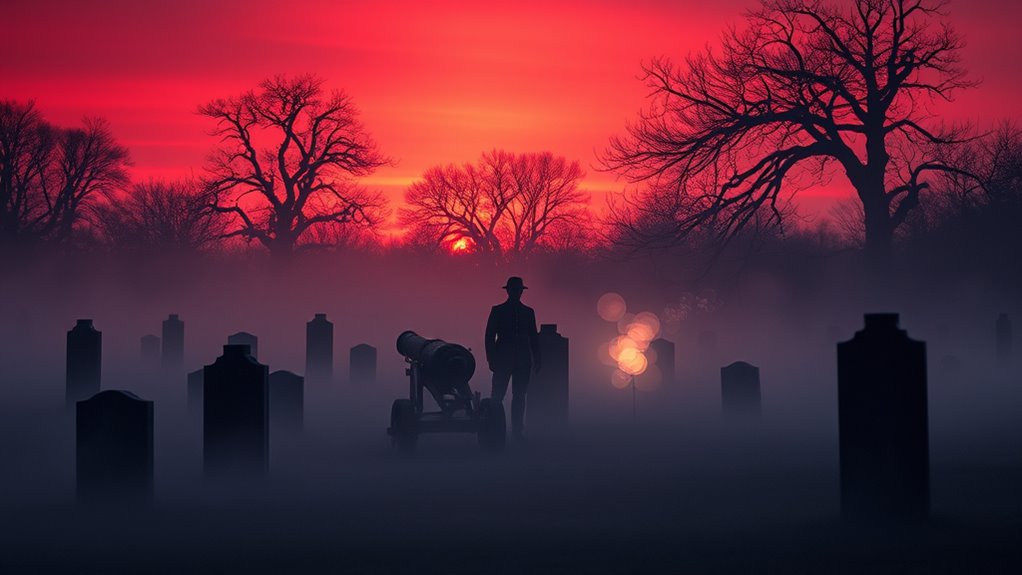
Amid the somber reflections on the battle’s immense toll, tales of the supernatural begin to emerge, weaving a haunting narrative into the fabric of Gettysburg’s history.
Visitors often report unexplained sounds, like disembodied breathing and distant voices, echoing through the battlefield. You might even catch a glimpse of ghostly apparitions, such as wounded soldiers or Confederate sentries, roaming the grounds. Narcissistic relationships can create emotional turmoil similar to the conflict felt in these haunted areas. Additionally, the emotional scars left by trauma can manifest in gaslighting tactics, resulting in an unsettling atmosphere. This turmoil can be likened to the emotional neglect experienced by those who suffer from the lingering effects of war. The intense history of conflict and loss may be akin to the essential oils for respiratory health, which can help soothe the emotional distress tied to such experiences. Moreover, the psychological impact of co-parenting communication can resonate with those grappling with the remnants of such historical trauma.
Unusual scents, like cigar smoke, can fill the air without a source in sight. Many have captured photographic evidence, revealing orbs and shadows that defy explanation. Haunted Gettysburg is believed to be a hotspot for these ghostly encounters due to the intense history of conflict and loss here, which leaves a lingering emotional energy.
Physical manifestations, including sudden chills or fleeting touches, add to the eerie atmosphere. The intense history of conflict and loss here leaves a lingering emotional energy, making Gettysburg a hotspot for paranormal claims.
Notable Haunting Locations in Gettysburg
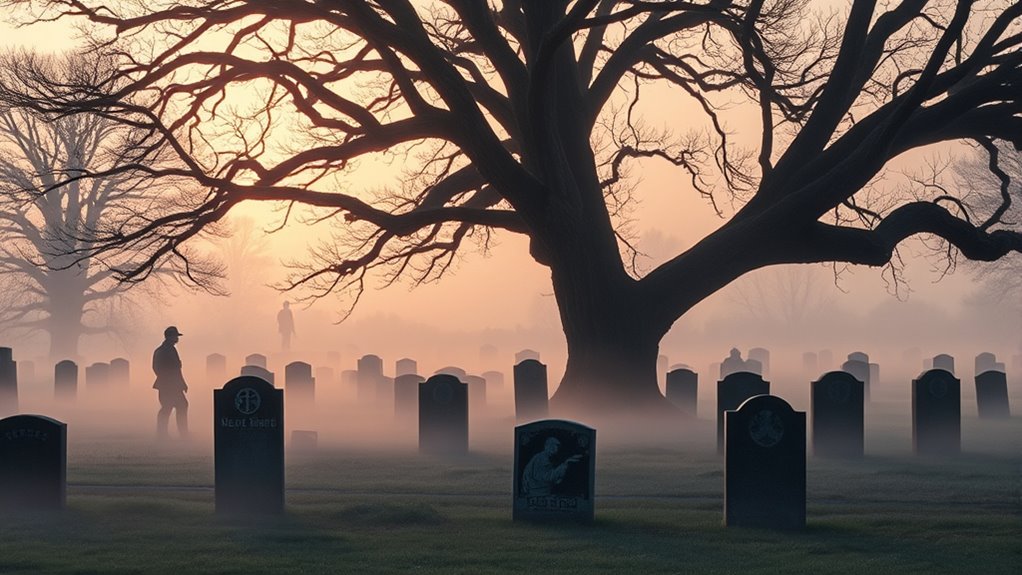
Seven notable locations in Gettysburg are renowned for their haunting tales, each steeped in the rich history of the Civil War.
You might start your journey at the Sachs Covered Bridge, where paranormal occurrences are common. Many visitors report seeing soldier apparitions wandering around the area, which may evoke feelings of emotional availability for those who have experienced loss. This bridge also offers a glimpse into the historic farmhouses that once lined the countryside, reminding us of the emotional instability that often plagued those who lived through the war. The bridge’s history is intertwined with the secure communication solutions used by soldiers during the battle, adding an eerie layer to its haunted reputation.
Devil’s Den is another spot, famous for its eerie atmosphere and soldier spirits.
For a cozy stay, consider the Tillie Pierce House Inn, known for ghostly sightings.
The Gettysburg Battlefield itself is a hotspot for ghost hunters, with numerous reported encounters.
The Gettysburg Battlefield is a haven for ghost hunters, teeming with chilling reported encounters.
Don’t miss the Daniel Lady Farm, which attracts paranormal enthusiasts.
The Jennie Wade House offers insights into tragic history and strange noises, while the Farnsworth House Inn hosts multiple spirits, making it a favorite for thrill-seekers.
The Cultural Impact of Gettysburg’s Legacy

While exploring Gettysburg, you’ll quickly discover its profound cultural impact, shaped by its historical significance and ongoing relevance. This crucial Civil War site draws thousands of visitors each year, making it a vibrant tourism hub. You’ll find diverse attractions, from reenactments to museums, immersing you in the lives of those who served. Annual events commemorate sacrifices and honor the ideals of democracy, while paranormal tourism adds an intriguing layer to its appeal. The site of a pivotal battle has become a focal point for understanding America’s ongoing struggles with issues of race and identity. Community events like Salsa on the Square foster connections between residents and students, promoting cultural exchange and inclusion. Gettysburg not only reflects on our national identity but also inspires ongoing discussions about equality, freedom, and unity, ensuring its legacy remains essential in contemporary society.
Frequently Asked Questions
What Types of Ghost Tours Are Available in Gettysburg?
When you explore ghost tours in Gettysburg, you’ll find a variety of options.
You can choose from family-friendly tours that mix history with paranormal experiences or opt for adults-only adventures for a more intense thrill.
Walking tours allow you to interact closely with haunted sites, while bus tours offer comfort.
Specialty tours, like ghost hunts, let you use tools to detect spirits.
Each option provides a unique glimpse into the area’s ghostly past.
Are There Any Famous Ghost Stories Associated With Gettysburg?
When you visit Gettysburg, you’ll hear famous ghost stories like the tale of Jennie Wade, the only civilian killed during the battle, whose spirit is said to linger in her home.
You might also encounter apparitions of soldiers near Devil’s Den, where fierce fighting occurred. Ghostly figures resembling Confederate troops often appear, adding to the eerie atmosphere.
Each story invites you to explore the haunted past that shapes this historic location.
How Can I Report a Paranormal Experience in Gettysburg?
If you’ve encountered eerie events, reporting your paranormal experience can be thrilling!
Start by seeking submission forms from local ghost tour operators or community centers. You can also share your spooky story on online paranormal forums and social media platforms.
Consider connecting with local historical societies, which often collect and study these accounts. Engaging with others in the community fosters fascinating discussions about your chilling encounters and keeps the haunted history alive!
Is Photography Allowed During Ghost Tours in Gettysburg?
Yes, you’re allowed to take photos during ghost tours in Gettysburg! It’s encouraged to capture any unexplained phenomena you might encounter.
While you can use any camera type, be mindful that flash photography may be limited to avoid disturbing the atmosphere.
Bring your camera along to enhance your experience, as photographing the historic sites can add an extra layer of excitement to your adventure in this famously haunted location.
Enjoy capturing those moments!
What Precautions Should I Take When Visiting Haunted Locations?
When you step into a haunted location, it’s like crossing into a domain where shadows whisper secrets.
First, research the site’s history and legends to enrich your experience. Travel in groups for safety, stick to designated paths, and keep your gear secure.
Stay calm if you encounter the unexpected, document everything, and treat the site with respect.
Finally, don’t forget to plan for emergencies, ensuring you’re prepared for any surprises that may arise.
Conclusion
As you walk through Gettysburg, each step echoes with the whispers of a past that shaped a nation. The restless spirits, like shadows of history, remind us that the battlefield is more than just ground; it’s a tapestry woven with sacrifice and courage. The flickering lanterns in the twilight symbolize the eternal light of remembrance, urging you to carry the stories of the fallen. In this haunted landscape, their legacy lives on, inviting you to honor their journey.
